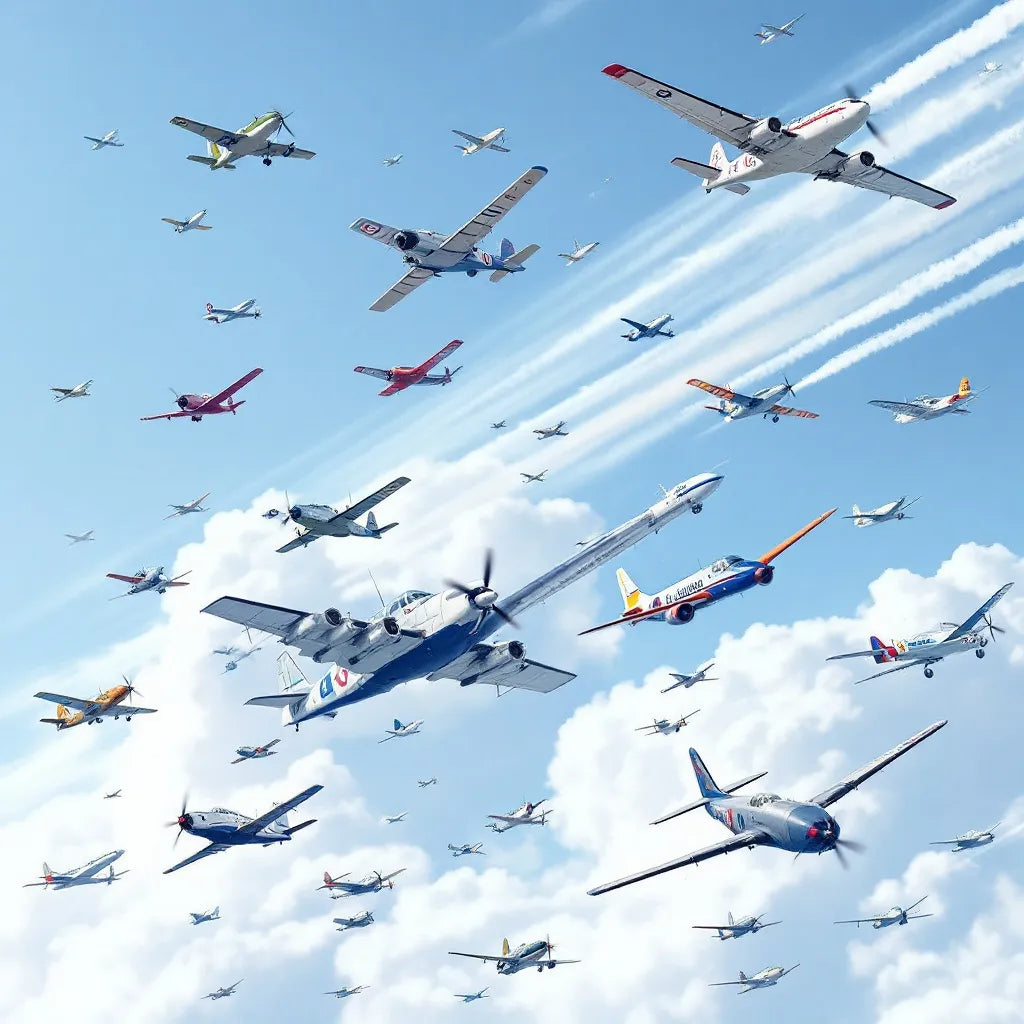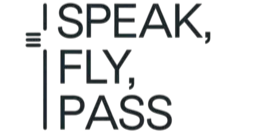
Meaning of Aviation: History, Types, and Future
Share
Aviation represents one of humanity's greatest technological achievements, enabling us to transcend natural limitations and connect the world in ways previously unimaginable. The meaning of aviation in English extends far beyond simply "flying aircraft" – it encompasses an entire ecosystem of technology, terminology, history, and human endeavor. For pilots, air traffic controllers, and aviation professionals, understanding the complete scope of aviation terminology and concepts is essential for safe and efficient operations. This article explores the multifaceted meaning of aviation in English, from its historical roots to its promising future.
Definition of Aviation
Aviation derives from the Latin word "avis," meaning bird, and refers to the design, development, production, operation, and use of aircraft, especially heavier-than-air aircraft. In English, aviation encompasses all activities surrounding flight—from theoretical aerodynamics to practical flight operations. This broad field includes civil aviation (both commercial and private), military aviation, and aerospace engineering.
Etymology and Linguistic Origins
The term "aviation" entered the English language in the early 1900s, though the concept of flight had been explored for centuries prior. The word represents the systematic approach to controlled flight that began with the Wright brothers' success. Unlike earlier terms such as "aeronautics" (which focused more on the scientific principles), aviation specifically emphasizes the practical operation of aircraft.
History of Aviation
The meaning of aviation in English has evolved alongside the remarkable history of human flight. What began as a daring experiment has transformed into a sophisticated global industry that shapes how we live, work, and connect.
Pioneering Days
Long before the Wright brothers' famous flight at Kitty Hawk in 1903, humans dreamed of soaring through the skies. Early aviation experiments included kites in ancient China, Leonardo da Vinci's flying machine sketches in the 15th century, and hot air balloon flights in 18th-century France. These endeavors laid the groundwork for powered flight, though they lacked the controlled, sustainable flight that defines modern aviation.
The Golden Age and Beyond
The period between World Wars I and II is often called aviation's "Golden Age," characterized by record-breaking flights, air races, and significant technological advancements. Commercial aviation began to take shape during this time, transforming from a novelty into a viable transportation method. Post-World War II developments saw the introduction of jet engines, pressurized cabins, and eventually supersonic travel, thoroughly changing the meaning of aviation in our collective consciousness.
Types of Aviation
The meaning of aviation encompasses several distinct categories, each with its own terminology, regulations, and operational procedures.
Commercial Aviation
Commercial aviation involves the transportation of passengers and cargo for hire. This sector includes scheduled airlines, charter operations, and air freight services. The language of commercial aviation is heavily standardized, with precise phraseology for communications between pilots and air traffic controllers. Recent news highlights the continued resilience of this sector, with Malaysia Airlines' parent company maintaining profitability despite operational challenges in 2024.
General Aviation
General aviation covers all civil aviation operations other than scheduled air services. This includes private flights, business aviation, flight training, aerial work, and recreational flying. The terminology in general aviation follows similar patterns to commercial aviation but may be less formal in certain contexts.
Military Aviation
Military aviation encompasses aircraft operations conducted by armed forces. This includes fighters, bombers, transport aircraft, helicopters, and unmanned aerial vehicles. Military aviation has its own specialized terminology and codes, often classified for security reasons, though many terms have crossed over into civilian use.
| Aviation Type | Primary Purpose | Key Terminology Examples |
|---|---|---|
| Commercial | Passenger and cargo transport for profit | Revenue passenger kilometers, load factor, block time |
| General | Private, recreational, and business flights | Touch-and-go, cross-country, hangar talk |
| Military | Defense, combat, and military logistics | Sortie, scramble, bogey, fox three |
Significance of Aviation in Modern Society
Aviation's meaning extends far beyond transportation—it has fundamentally reshaped human society, economics, and culture.
Economic Impact
The aviation industry generates trillions of dollars in economic activity annually, supporting millions of jobs worldwide. Beyond direct employment, aviation facilitates tourism, international trade, and business travel. The industry's resilience was highlighted in recent reports about airline profitability despite operational challenges, demonstrating aviation's adaptability even in difficult circumstances.
Social Connectivity
Aviation has shrunk our world, making international travel accessible to billions. This unprecedented mobility has fostered cultural exchange, family connections across continents, and global collaboration. The meaning of aviation in English now carries connotations of freedom, opportunity, and global citizenship.
Aviation Terminology
The language of aviation is precise, standardized, and essential for safety. Understanding aviation terminology is crucial for pilots, air traffic controllers, and industry professionals.
Technical Language and Jargon
Aviation English encompasses thousands of specialized terms, from "aileron" and "empennage" to "ILS approach" and "squawk code." This technical vocabulary allows for clear, concise communication about complex operations. For those pursuing careers in aviation, mastering this terminology is essential, as offered through specialized resources like the English Aviation Book from Speak Fly Pass.
Radiotelephony and Standard Phraseology
One of the most distinctive aspects of aviation English is the standardized phraseology used in radio communications. This carefully designed language system minimizes ambiguity and ensures safety-critical information is transmitted clearly, even in stressful situations or across language barriers.
| Standard Phrase | Meaning | Example in Context |
|---|---|---|
| "Roger" | Message received and understood | "Descend to flight level 240." "Roger." |
| "Wilco" | Will comply with instructions | "Proceed to holding point, runway 27." "Wilco." |
| "Unable" | Cannot comply with instruction | "Climb to FL350." "Unable due to weight restrictions." |
| "Say again" | Repeat your last transmission | "Contact Ground on 121.9." "Say again frequency." |
The Role of Aviation in Global Transportation
Aviation serves as the backbone of global transportation, moving billions of passengers and millions of tons of cargo annually.
Passenger Transit
Commercial airlines connect cities worldwide, making international travel accessible and efficient. The meaning of aviation in this context relates to human mobility on an unprecedented scale—families reuniting, businesses collaborating face-to-face, and tourists exploring distant cultures.
Air Cargo and Logistics
Air freight represents the highest-value segment of global shipping, transporting everything from emergency medical supplies to fresh flowers and electronic components. Aviation enables just-in-time manufacturing, rapid response to humanitarian crises, and global e-commerce. The terminology surrounding air cargo includes specific language for handling, customs clearance, and intermodal connections.
Top Air Travel Routes (Pre-pandemic)
- Seoul Gimpo–Jeju
- Melbourne–Sydney
- Mumbai–Delhi
- São Paulo–Rio de Janeiro
- Tokyo Haneda–Sapporo
Major Air Cargo Hubs
- Hong Kong (HKG)
- Memphis (MEM)
- Shanghai (PVG)
- Incheon (ICN)
- Louisville (SDF)
Aviation Safety and Regulations
Safety stands at the core of aviation's meaning and practice. The industry has developed comprehensive regulatory frameworks and safety systems that make flying the safest form of transportation.
Regulatory Framework
Aviation is governed by international standards developed by the International Civil Aviation Organization (ICAO) and implemented by national authorities like the Federal Aviation Administration (FAA) in the United States and the European Union Aviation Safety Agency (EASA) in Europe. These regulations cover everything from aircraft certification to pilot licensing and operational procedures.
Safety Management Systems
Modern aviation safety focuses on proactive risk management rather than reactive responses to incidents. Safety Management Systems (SMS) are now standard across the industry, incorporating data collection, analysis, and continuous improvement processes. Recent developments include the FAA's Safety Alert on visual approach risks, demonstrating the industry's commitment to addressing emerging safety concerns.
Future Trends in Aviation
Aviation continues to evolve, with emerging technologies and sustainability concerns driving innovation.
Technological Advancements
The future of aviation is being shaped by technologies like artificial intelligence, autonomous systems, and advanced materials. Huawei recently launched five solutions to accelerate aviation intelligence, highlighting the growing role of technology in modernizing aviation operations. These innovations are expanding the meaning of aviation to include increasingly sophisticated digital and automated systems.
Sustainable Aviation
Environmental concerns are driving significant changes in aviation, from more efficient aircraft designs to sustainable aviation fuels (SAF) and electric propulsion. The terminology of aviation is evolving to incorporate concepts like "carbon-neutral operations," "electric vertical takeoff and landing" (eVTOL), and "hydrogen powertrains."
Aviation in Different Cultures and Languages
While English serves as the international language of aviation, the field's meaning and cultural significance vary across different societies and linguistic contexts.
English as the Language of Aviation
ICAO has established English as the standardized language for international aviation communications, requiring pilots and controllers to demonstrate proficiency. Specialized courses like those offered by Speak Fly Pass help aviation professionals develop the language skills needed for ICAO tests and everyday operations.
Cultural Perspectives on Flight
Different cultures have unique relationships with aviation, from countries with strong indigenous aerospace industries to regions where air travel remains a luxury. The terminology, metaphors, and cultural significance of aviation reflect these varied perspectives, though the technical language remains standardized for safety reasons.
Career Opportunities in Aviation
The meaning of aviation extends to diverse professional pathways, offering careers that combine technical expertise, communication skills, and global perspectives.
Flight Operations
Pilots, flight attendants, and dispatchers represent the most visible aviation careers. These roles require specific technical knowledge and certifications, including strong communication skills and familiarity with aviation English. For aspiring pilots and air traffic controllers, resources like the ICAO English proficiency tests (supported by platforms like Speak Fly Pass) are crucial steps on their career paths.
Engineering and Maintenance
Aircraft engineers, maintenance technicians, and aerospace designers ensure the safety and innovation of aircraft systems. These technical roles involve specialized vocabulary relating to aircraft systems, materials, and procedures.
Management and Business
Aviation management roles, from airline executives to airport administrators, require understanding both the technical aspects of aviation and business principles. The Airline Strategy Awards 2025 will recognize excellence in this field, highlighting the importance of strategic leadership in aviation.
Key Aviation Career Paths
- Commercial Pilot
- Air Traffic Controller
- Aircraft Maintenance Engineer
- Aerospace Engineer
- Aviation Safety Inspector
- Airline Operations Manager
- Flight Dispatcher
Required Skills and Qualifications
- Technical knowledge of aircraft systems
- Aviation English proficiency
- Safety awareness and risk management
- Communication and teamwork
- Problem-solving under pressure
- Regulatory understanding
- Spatial awareness and mathematical skills
Conclusion
The meaning of aviation in English encompasses a rich tapestry of history, technology, terminology, and human achievement. From the Wright brothers' first flight to today's global air traffic system and tomorrow's innovations, aviation continues to evolve while maintaining its core purpose of connecting our world. Understanding aviation terminology and concepts is essential not only for industry professionals but for anyone seeking to comprehend this fundamental aspect of modern society.
For those pursuing careers in aviation or seeking to improve their aviation English for ICAO tests, specialized resources like those offered by Speak Fly Pass provide the linguistic foundation necessary for safe and effective communication in this dynamic field. As we look to the future, the meaning of aviation will continue to expand, encompassing new technologies, sustainable practices, and ever-greater connectivity across our global community.
